Abstract
The transformer-2 (tra-2) locus is one of a set of regulatory loci that control sex determination in Drosophila melanogaster. Temperature-shift experiments with temperature-sensitive tra-2 mutants demonstrate that within single cell lineages tra-2+ function is required at several times, and probably continuously, during development for the occurrence of a series of determinative decisions necessary for female sexual differentiation. Analysis of the effects of tra-2 in the genital disc demonstrates that the tra-2+ function is necessary in females both to prevent male sexual differentiation and to permit female differentiation. These and other results support the model that the tra-2+ and tra+ loci act to control the expression of the bifunctional doublesex (dsx) locus.
Full text
PDF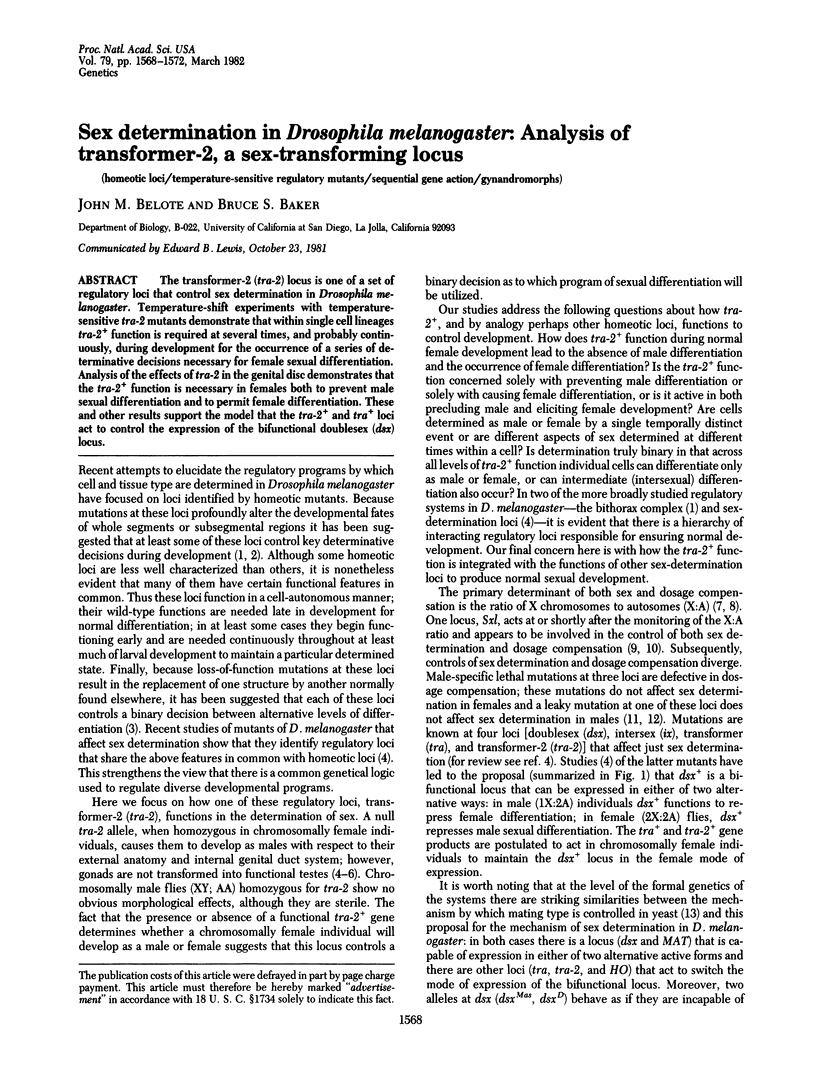
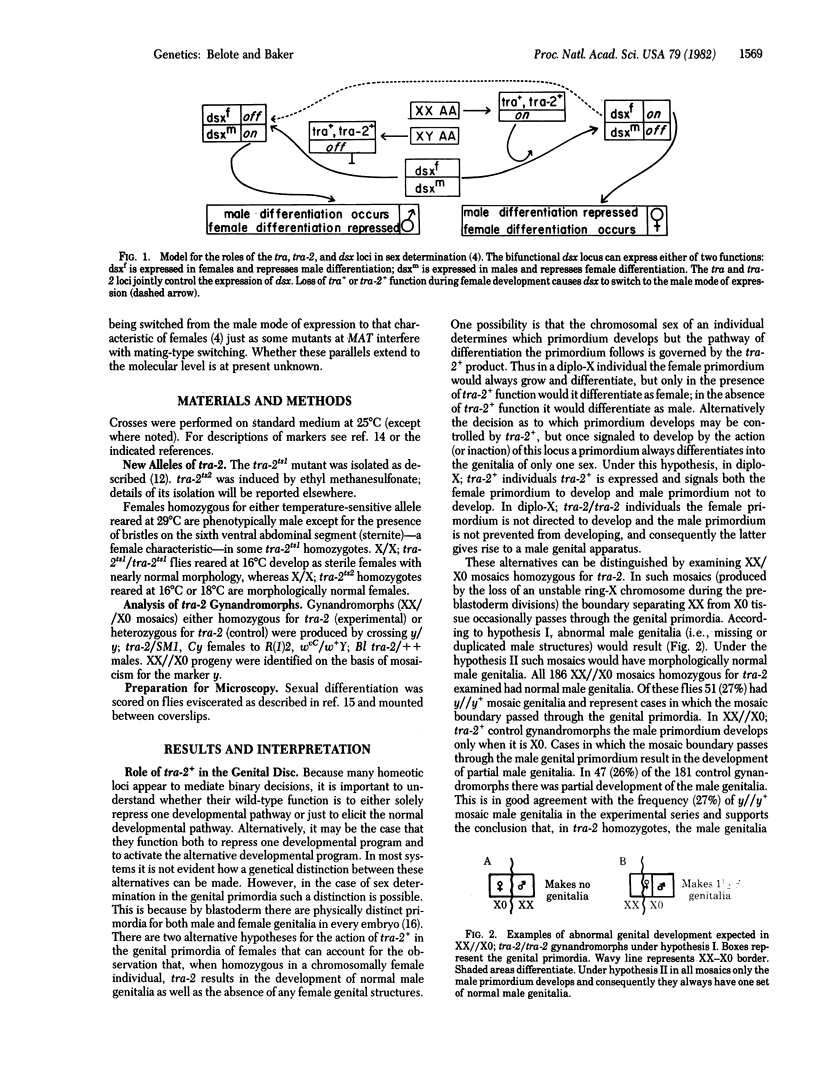
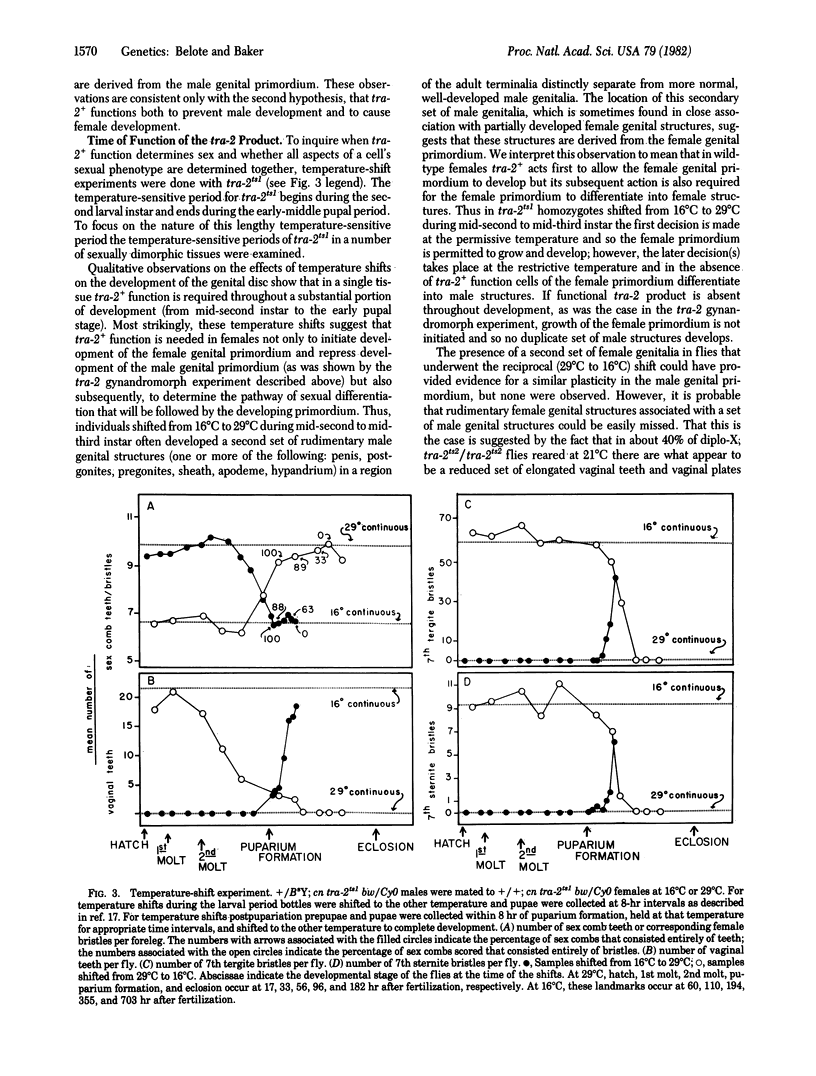
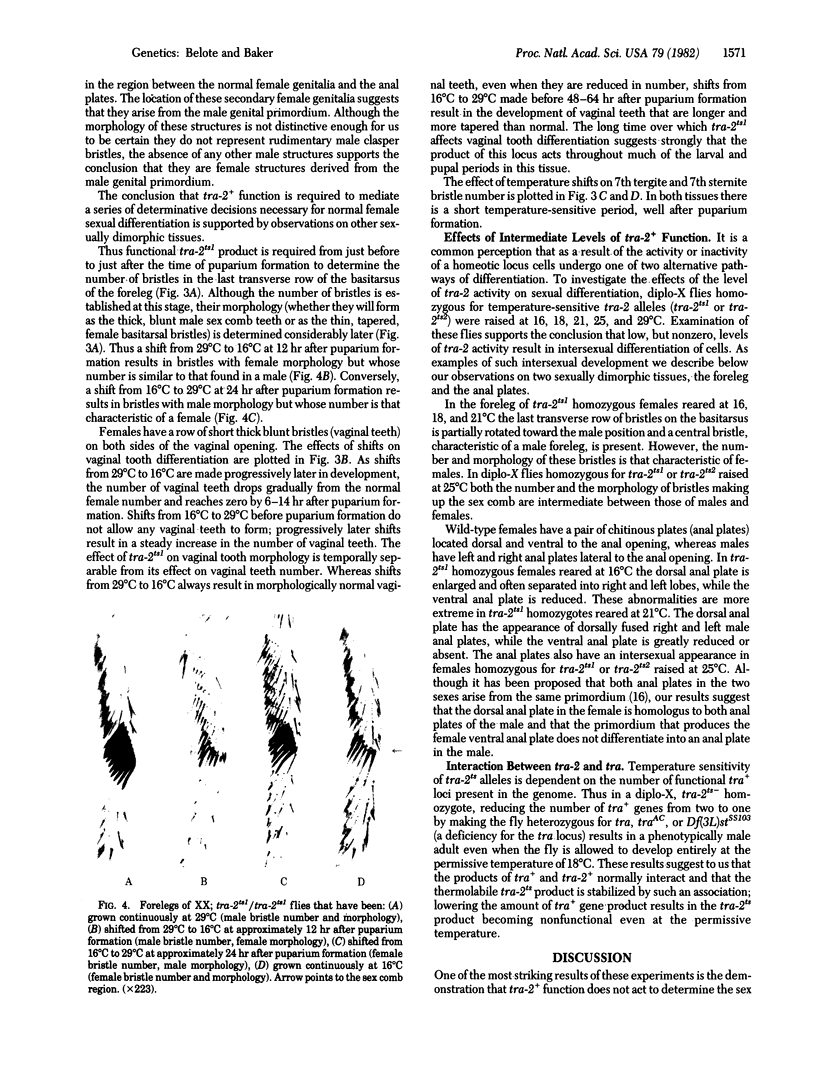
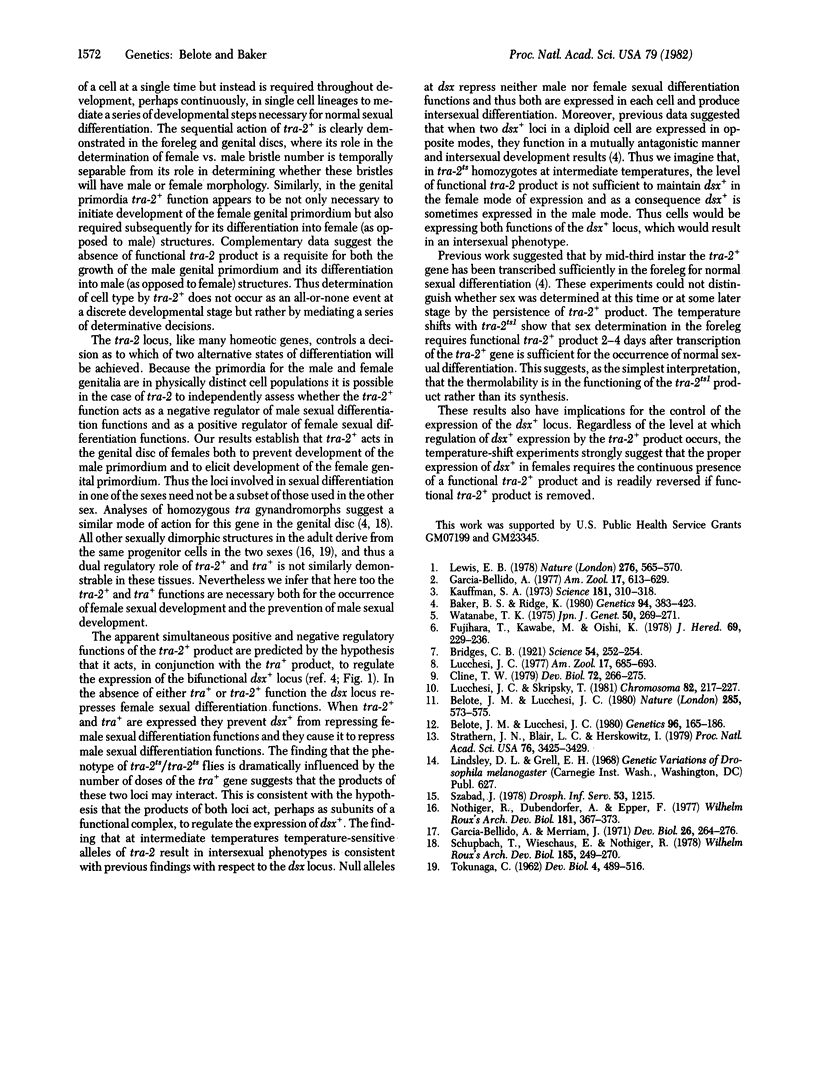
Images in this article
Selected References
These references are in PubMed. This may not be the complete list of references from this article.
- Baker B. S., Ridge K. A. Sex and the single cell. I. On the action of major loci affecting sex determination in Drosophila melanogaster. Genetics. 1980 Feb;94(2):383–423. doi: 10.1093/genetics/94.2.383. [DOI] [PMC free article] [PubMed] [Google Scholar]
- Belote J. M., Lucchesi J. C. Control of X chromosome transcription by the maleless gene in Drosophila. Nature. 1980 Jun 19;285(5766):573–575. doi: 10.1038/285573a0. [DOI] [PubMed] [Google Scholar]
- Belote J. M., Lucchesi J. C. Male-specific lethal mutations of Drosophila melanogaster. Genetics. 1980 Sep;96(1):165–186. doi: 10.1093/genetics/96.1.165. [DOI] [PMC free article] [PubMed] [Google Scholar]
- Bridges C. B. TRIPLOID INTERSEXES IN DROSOPHILA MELANOGASTER. Science. 1921 Sep 16;54(1394):252–254. doi: 10.1126/science.54.1394.252. [DOI] [PubMed] [Google Scholar]
- Cline T. W. A male-specific lethal mutation in Drosophila melanogaster that transforms sex. Dev Biol. 1979 Oct;72(2):266–275. doi: 10.1016/0012-1606(79)90117-9. [DOI] [PubMed] [Google Scholar]
- Fujihara T., Kawabe M., Oishi K. A sex-transformation gene in Drosophila melanogaster. J Hered. 1978 Jul-Aug;69(4):229–236. doi: 10.1093/oxfordjournals.jhered.a108936. [DOI] [PubMed] [Google Scholar]
- Garcia-Bellido A., Merriam J. R. Clonal parameters of tergite development in Drosophila. Dev Biol. 1971 Oct;26(2):264–276. doi: 10.1016/0012-1606(71)90126-6. [DOI] [PubMed] [Google Scholar]
- Kauffman S. A. Control circuits for determination and transdetermination. Science. 1973 Jul 27;181(4097):310–318. doi: 10.1126/science.181.4097.310. [DOI] [PubMed] [Google Scholar]
- Lewis E. B. A gene complex controlling segmentation in Drosophila. Nature. 1978 Dec 7;276(5688):565–570. doi: 10.1038/276565a0. [DOI] [PubMed] [Google Scholar]
- Lucchesi J. C., Skripsky T. The link between dosage compensation and sex differentiation in Drosophila melanogaster. Chromosoma. 1981;82(2):217–227. doi: 10.1007/BF00286106. [DOI] [PubMed] [Google Scholar]
- Strathern J. N., Blair L. C., Herskowitz I. Healing of mat mutations and control of mating type interconversion by the mating type locus in Saccharomyces cerevisiae. Proc Natl Acad Sci U S A. 1979 Jul;76(7):3425–3429. doi: 10.1073/pnas.76.7.3425. [DOI] [PMC free article] [PubMed] [Google Scholar]
- TOKUNAGA C. Cell lineage and differentiation on the male foreleg of Drosophila melanogaster. Dev Biol. 1962 Jun;4:489–516. doi: 10.1016/0012-1606(62)90054-4. [DOI] [PubMed] [Google Scholar]




